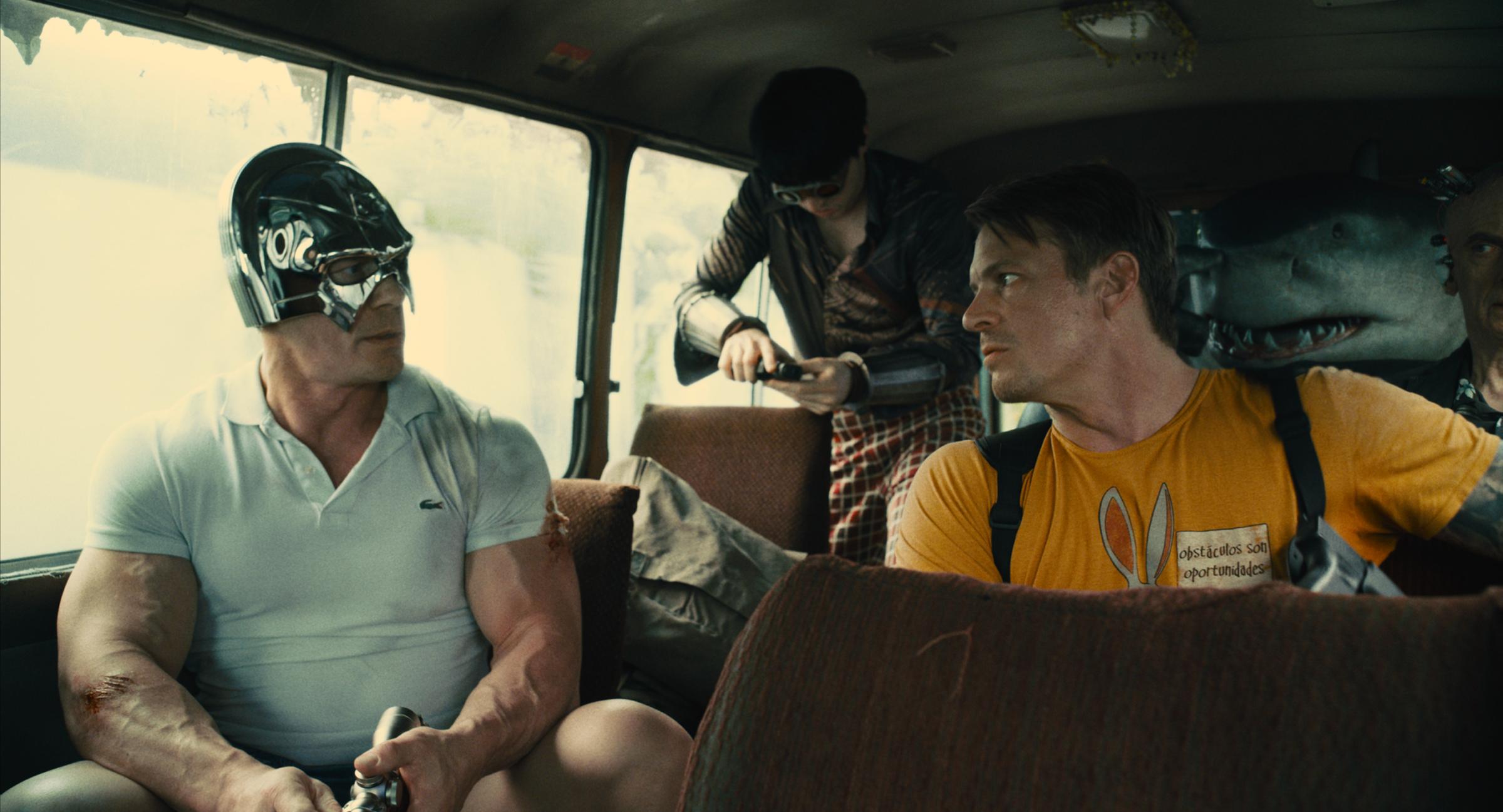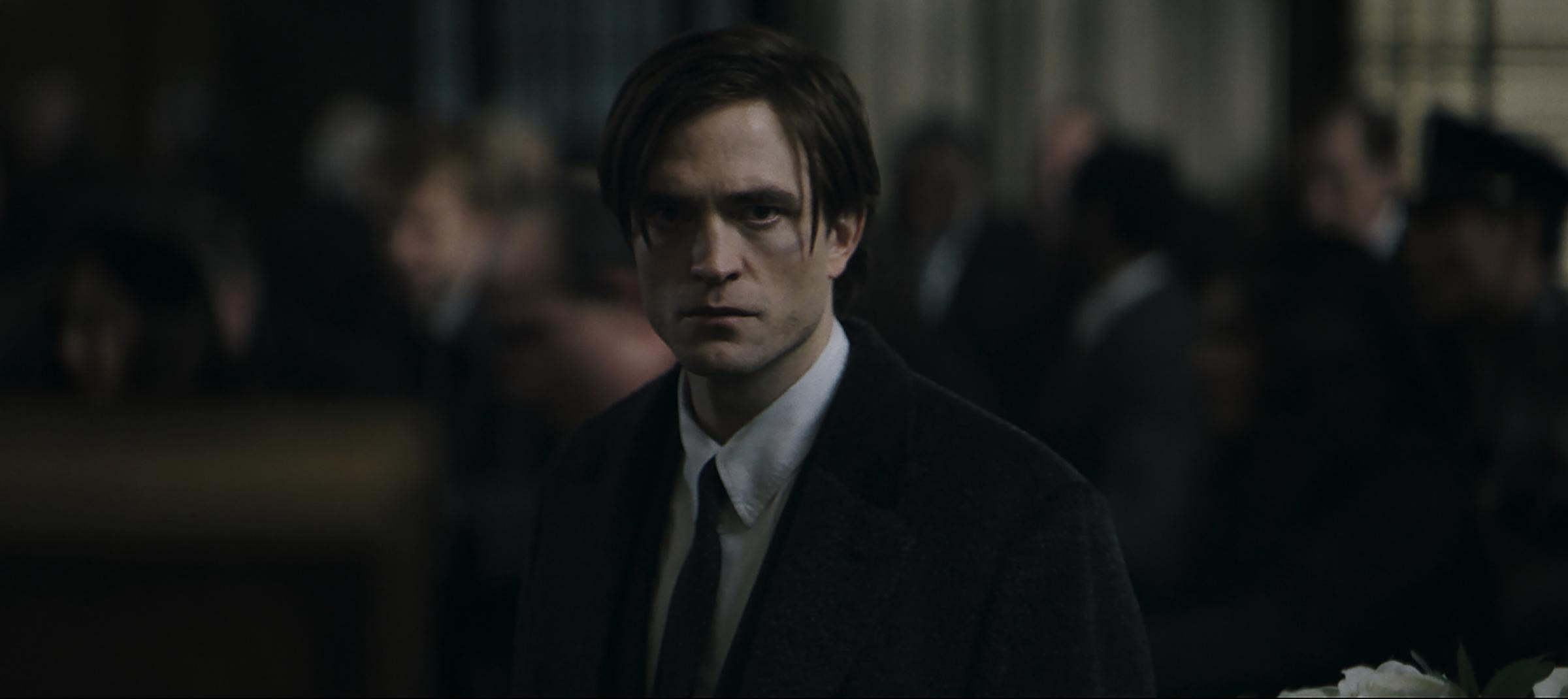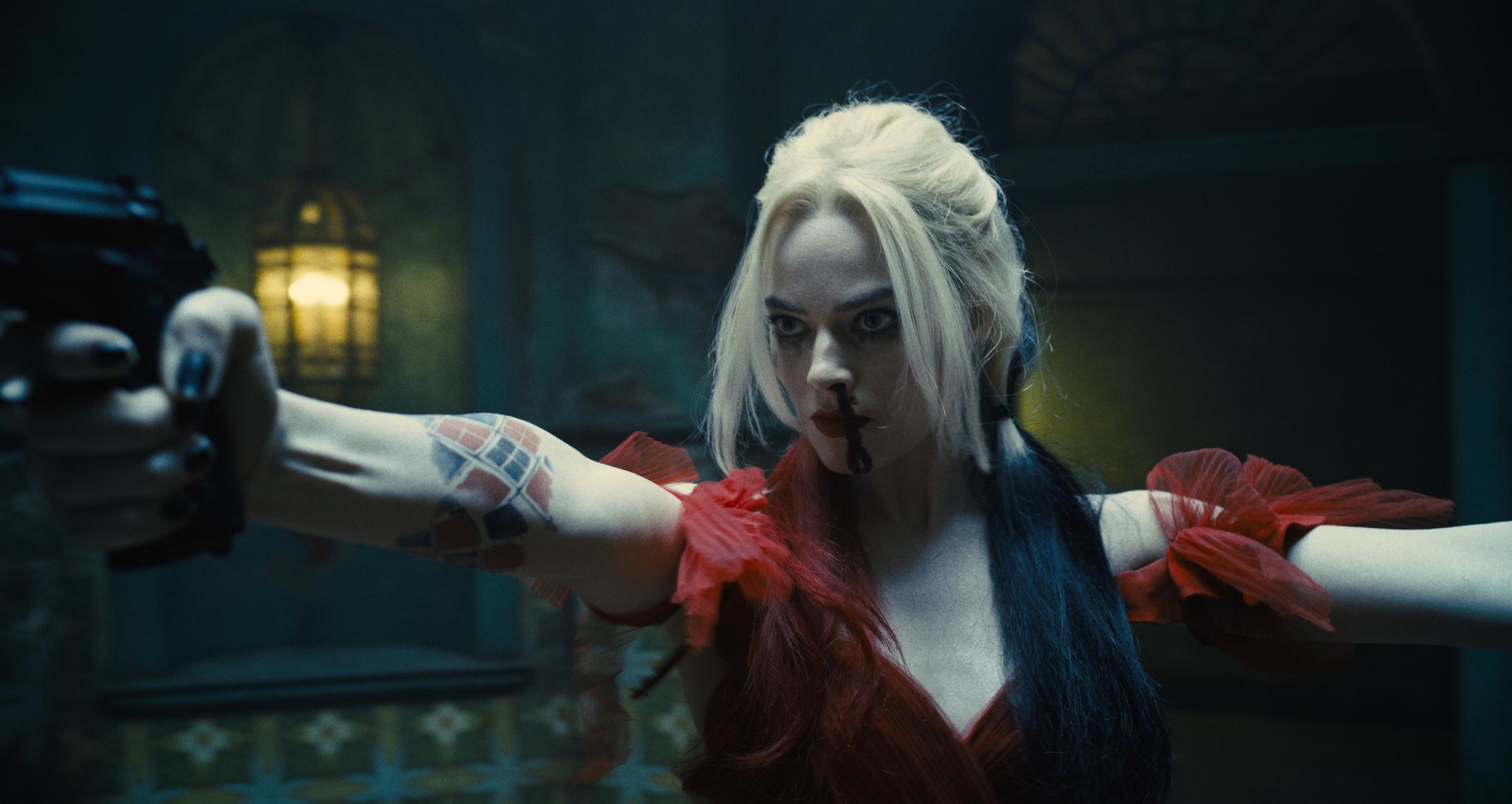The new DC movie The Suicide Squad is a classic James Gunn flick: Like Gunn’s other franchise for rival studio Marvel, The Guardians of the Galaxy, The Suicide Squad is very weird and features violent talking creatures—just sub out a raccoon and tree for a shark and a weasel. But Warner Bros. and DC clearly gave Gunn carte blanche to make this movie as violent and un-Disney as he wanted: A lot of people’s heads get blown up, bitten off and sliced in half. The camera loves to linger on the bloody aftermath.
But wait, didn’t we already see some villains’ heads explode in another Suicide Squad movie. Why, yes, we did. 2021’s The Suicide Squad is a soft reboot of David Ayer’s Suicide Squad from 2016. (Note the all-important article at the beginning of the 2021 film’s title). Why didn’t they just call this movie Suicide Squad 2? Well, because Warner Bros. clearly wants to hit the reset button on much of the DC Entertainment Universe (DCEU). Some DCEU movies, like Wonder Woman and Aquaman, have been smashing successes at the box office and pleased critics. Others, like the original Suicide Squad, we are all better off forgetting—though it’s hard to stop thinking about the horrifying anecdotes of Jared Leto sending used condoms to Will Smith on the set of the 2016 movie to “get into character” as the Joker.
While Marvel’s intertwining films and TV shows all seem to be leading to another massive team-up movie, the trajectory of the DC Entertainment Universe (DCEU) is much less clear. Both the MCU and DCEU are embracing the multiverse, with different heroes and villains living in parallel universes to one another. We will soon see multiple Spider-Men from different worlds together in one MCU movie and multiple Batmans from different worlds together in one DCEU movie. In this year’s MCU movies and TV shows, Marvel has introduced its new big heroes and villains for the next phase of its films. But with no The Suicide Squad sequel greenlit, Ben Affleck and Henry Cavill—who played Batman and Superman in Justice League—leaving the franchise and a new Batman movie starring Robert Pattinson set for next year, it’s difficult to determine how the pieces of the DCEU fit together and who the major players in the franchise’s future will be.
Read More: Loki Just Upended the Future of the Marvel Cinematic Universe
One thing is certain: The stinger at the end of The Suicide Squad signals that we’ll be seeing some of the movie’s anti-heroes again. Here’s everything you need to know about a potential The Suicide Squad sequel (threequel?) and how it relates to the future of the DCEU.
The Suicide Squad’s end-credits scene teases a Peacemaker TV series with John Cena

Technically, The Suicide Squad serves up two extra scenes after the end of the movie. The first one comes mid-credits and simply shows that Weasel (Sean Gunn), who was left for dead during a beach raid early in the movie, is still alive. He wanders off into the forest and, most likely, into future Suicide Squad films.
The second stinger centers on John Cena’s Peacemaker. In the movie, Peacemaker turned out to be a villain, or at least an anti-hero. Amanda Waller (Viola Davis), the amoral government agent who came up with the idea for a Suicide Squad, tasked Peacemaker with destroying evidence that the U.S. government had been involved with Project Starfish. When Joel Kinnamen’s Rick Flag threatened to release the evidence that the U.S. government tortured innocent people in order to power a gigantic starfish weapon to the press, Peacemaker stabbed him through the heart.
Peacemaker was poised to off Ratcatcher II (Daniela Melchior) as well when Idris Elba’s Bloodsport put a bullet in his neck. Bloodsport and Ratcatcher II escaped, leaving Peacemaker for dead. Bloodsport used the evidence as leverage to keep his daughter safe from Waller.
Peacemaker must have some sort of superhuman strength (or plot armor) because it is revealed in the end-credits scene that he survived both being shot in the throat and having a gigantic building collapse on him. Waller orders that he be recovered from the rubble and tasks two of her minions with minding him, punishment, they believe, for undermining her and helping the Suicide Squad.
The teaser hints at the plot of the Peacemaker TV show coming to HBO Max in January of 2022. James Gunn wrote all eight episodes of the series and directed four of them. While every other new hero in Suicide Squad shared an anecdote from their childhood to explain how they got their superpowers, Peacemaker didn’t get an origin story. The show will explain how the character became the patriotic menace he now is.
A Batman spinoff and Justice League Dark are also coming to HBO Max

Peacemaker is not the first DC show to hit HBO Max. The excellent animated Harley Quinn series moved to the streaming service this year. Shows like Doom Patrol and Stargirl also live on the streaming service, while several other DC shows, like Supergirl and The Flash are airing on the CW.
But Peacemaker appears to signal a new era of shows that interplay with Warner Bros. superhero movies, with stars moving back and forth between television and film. HBO Max has a Green Lantern series in the works. Matt Reeves, who is directing the upcoming Batman film starring Robert Pattinson, is also working on a spinoff series centering on the Gotham City Police Department for the streamer. And J.J. Abrams is reportedly constructing an entire Justice League Dark cinematic and television universe for the studio.
The DCEU will contain multiple “worlds”

Will the Gotham City Police of Reeves’ show investigate Peacemaker for his murderous ways? Probably not. The DCEU has branched off into at least two separate worlds, maybe more.
In one world exists the original pieces of the DCEU: Gal Gadot’s Wonder Woman, Affleck’s Batman, Robbie’s Harley Quinn, Leto’s Joker, Jason Momoa’s Aquaman and Ezra Miller’s The Flash, to name a few. The initial plan was to build those pieces into a Marvel-esque interconnected story. But unlike Marvel, DC didn’t start with origin story films and build towards team-up movies. They started with the team-ups, like Batman v Superman, Suicide Squad and Justice League, and then tried to retroactively fill in the bios with spinoff movies for some of those characters.
None of the initial team-up movies were received particularly well by critics, but things really imploded with the premiere of Joss Whedon’s Justice League. The movie, which Whedon had taken over directing from Zack Snyder after Snyder stepped aside because of a family tragedy, disappointed fans and critics alike—so much so that fans started lobbying for Snyder’s cut of the film and finally got it on HBO Max earlier this year.
Read More: The Snyder Cut Is a Better Version of Justice League. But It Sets a Dangerous Precedent
Now, Affleck’s Batman movie has been scuttled; Warner Bros. has issued no updates on several movies it had initially planned centered on Leto’s Joker; and Cavill is reportedly leaving the franchise for good.
Which means it’s time to reboot those characters—sort of. Warner Bros. already produced a Joker movie starring Joaquin Phoenix that has absolutely no connection to Affleck’s Batman. Now Pattinson will get a Batman movie, which will kick off a whole new Batman universe on World 2, if you will. Presumably yet another actor will get the chance to play Joker in Pattinson’s Batman sequels should the studio decide to revisit that villain.
But Warner Bros. still has some pieces that work from the original lineup, like Harley Quinn, who, despite disappointing box office returns for her confusingly-named spinoff movie Birds of Prey, has proven popular with fans. The movies about Aquaman and Wonder Woman have also performed well at the box office. These characters will soldier on in their independent movies, as will Miller’s Flash. And that’s where things get complicated.
The Flash will join together the various worlds

The Flash movie will acknowledge the existence of the multiverse. Affleck’s Batman, who starred alongside Miller’s Flash in Justice League, will appear in the film—but so will Michael Keaton’s Batman from a different universe. (Keaton starred as the caped crusader in Batman (1989) and Batman Returns (1992).)
Director Andy Muschetti told Vanity Fair, “This movie is a bit of a hinge in the sense that it presents a story that implies a unified universe where all the cinematic iterations that we’ve seen before are valid. It’s inclusive in the sense that it is saying all that you’ve seen exists, and everything that you will see exists, in the same unified multiverse.”
Confused? It’s only going to get more confusing to figure out how these multiverses work. Consider, for instance, that actor David Dastmalchian, who plays Polka Dot Man in The Suicide Squad already appeared as one of the Joker’s henchmen in The Dark Knight. Does that mean that the same man turned into two different villains in two different, parallel universes? Perhaps.
It’s unclear if any members of the Suicide Squad will ever interact with the Flash—or Wonder Woman or any of the Batmen for that matter. For now, we just have to start keeping track of the various characters in these movies on org charts and hope that studios cherry pick the best ones for spinoff movies and series.
More Must-Reads from TIME
- Caitlin Clark Is TIME's 2024 Athlete of the Year
- Where Trump 2.0 Will Differ From 1.0
- Is Intermittent Fasting Good or Bad for You?
- The 100 Must-Read Books of 2024
- Column: If Optimism Feels Ridiculous Now, Try Hope
- The Future of Climate Action Is Trade Policy
- FX’s Say Nothing Is the Must-Watch Political Thriller of 2024
- Merle Bombardieri Is Helping People Make the Baby Decision
Write to Eliana Dockterman at eliana.dockterman@time.com